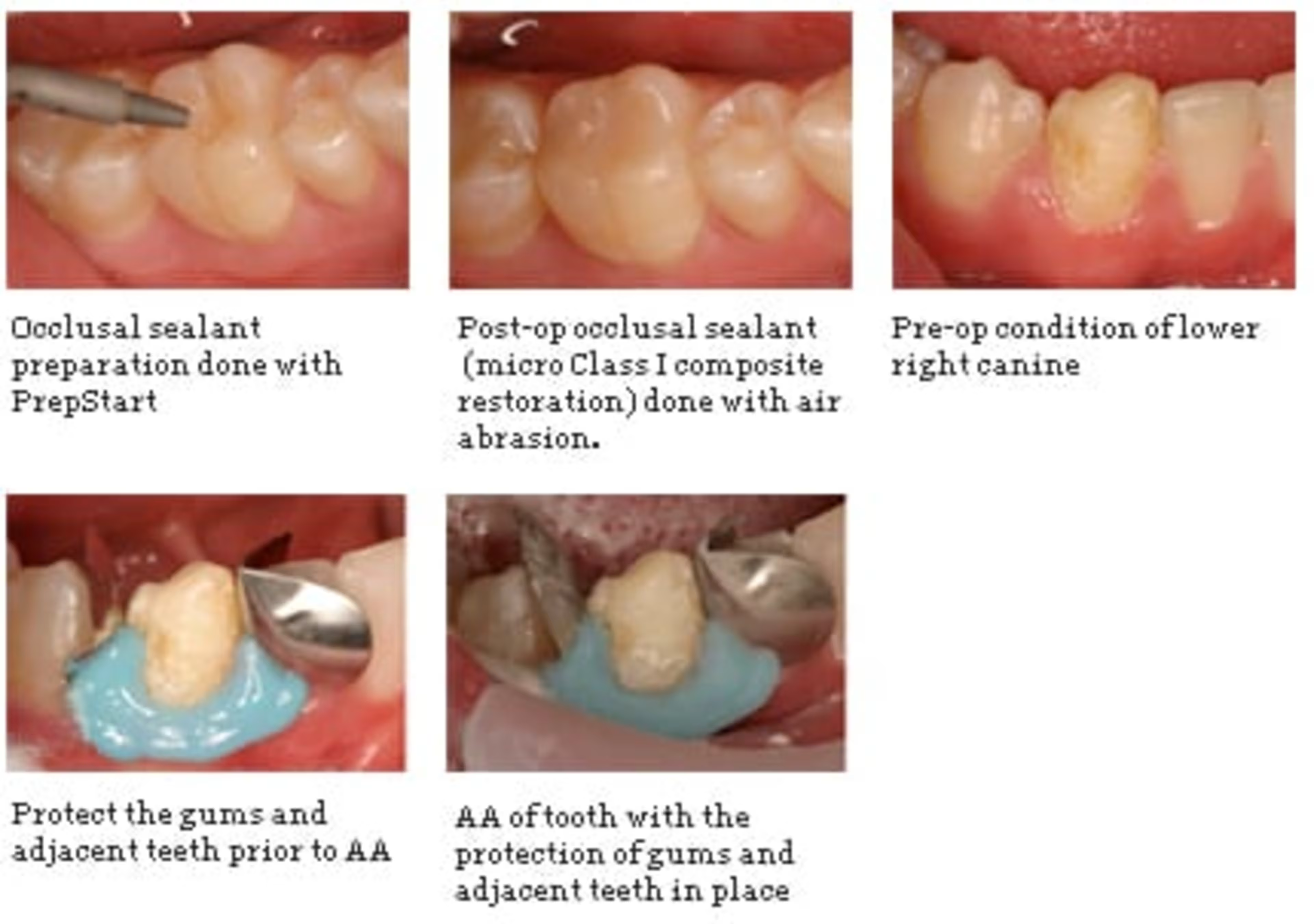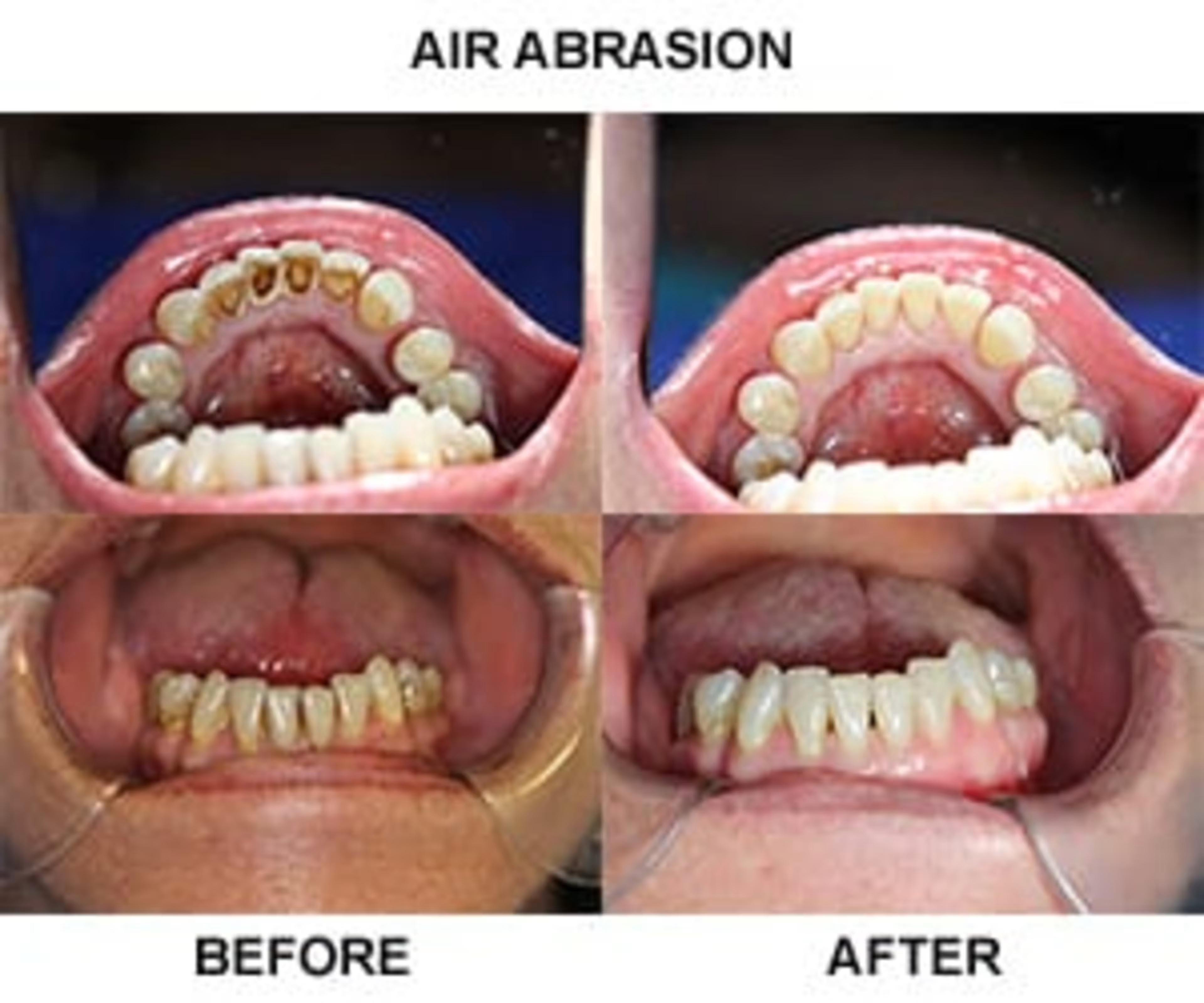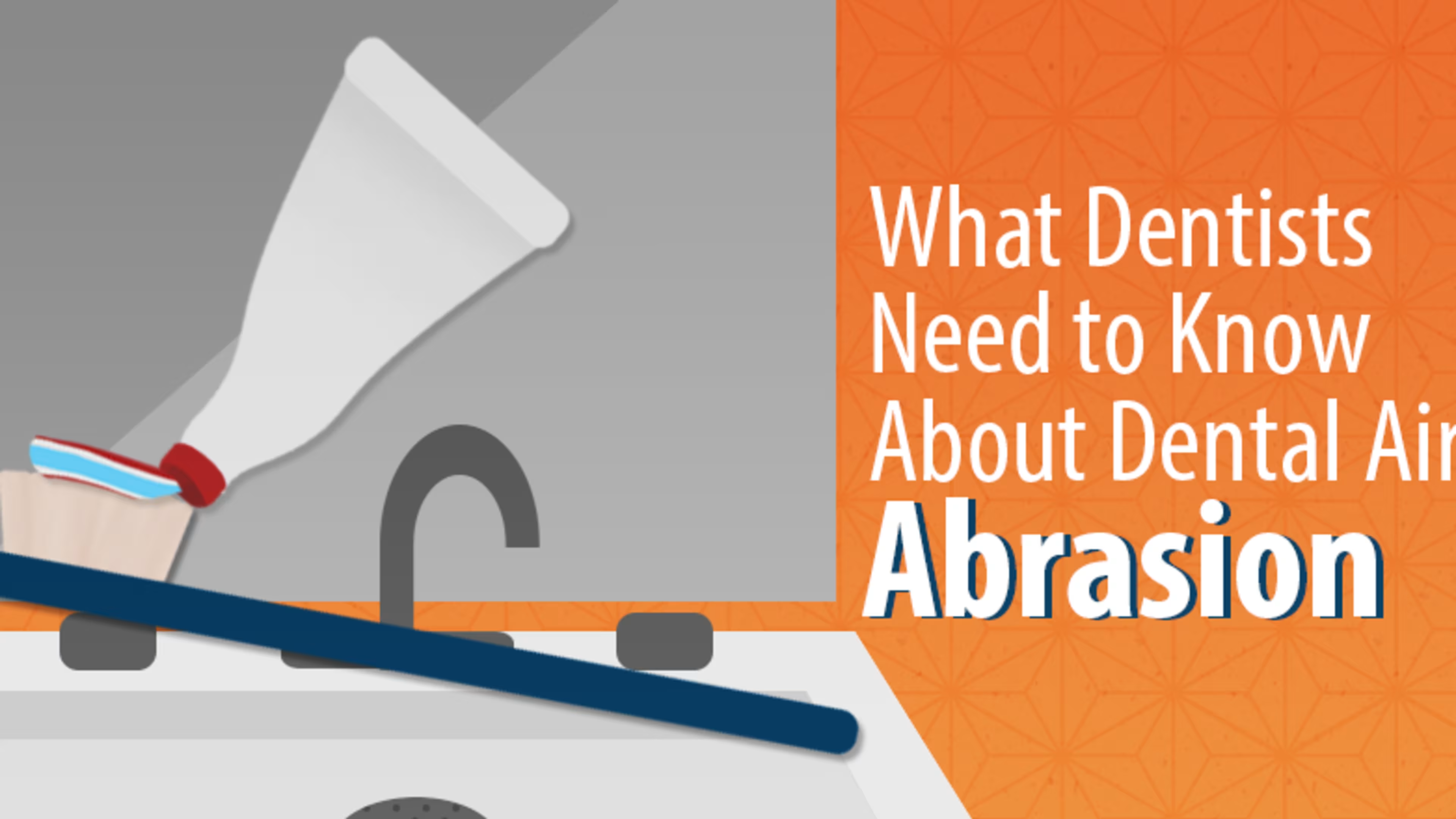As a dentist, it’s probably not news to you that many people are afraid to see you. And of all the tools that make you scary, the drill is probably the most menacing. The heat, grinding noise, and pain are more than enough to keep people out of your chair for far longer than is healthy.
Air abrasion is an alternative to drills that may actually help you get more patients. This type of dentistry is making dentist trips less dreadful for many people. Fillings, sealants, and chipped teeth repairs are just a few of the many procedures that can be performed by air abrasion. Instead of using a drill to remove decay or prep teeth for cosmetic procedures, air abrasion utilizes a small stream of air and abrasive particles, such as aluminum oxide or silicon, to remove decay.
What is Air Abrasion?
Air abrasion is gaining more popularity among dental offices, though some are still unaware of the innovative dental technology. Like a drill, air abrasion can be used for sealants and cavity preparation, as well as to rid teeth of decay and discoloration. It acts like a mini sandblaster and sprays decay and discoloration away.
A stream of particles—usually silica, aluminum oxide, or a baking soda mixture—is aimed at the decay or discoloration with a small, handheld tool. You then just suction decay and particles out of the mouth. You can also cover the inside of the mouth with a rubber dam to protect it from the particles and loose decay. You’ll use a protective resin to protect surrounding teeth.
History of Air Abrasion
Air abrasion is a form of minimally invasive dentistry pioneered by Dr. Robert Black in the 1940s and officially introduced in 1951. It took a while to catch on because the materials used to complete fillings and other procedures were not compatible with air abrasion. Air abrasion itself has not changed much through the years; rather, the techniques used to perform fillings, sealants, bonding, and other procedures have become more sophisticated, making them compatible with the abrasion technology.

Before composite fillings, amalgam fillings needed clearly defined walls and margins to fill, something air abrasion couldn’t provide. The advent of high-velocity suction made cleanup after air abrasion much easier, further boosting its feasibility.
Air Abrasion vs the Rotary Drill
Most people don’t look forward to visiting you; in fact, many people dread it. Children especially are scared of dentists. Rotary drills are the main cause of dentist-related fears; the whirring sound, heat, and pressure caused by dental drills are more than enough to make anyone squirm.
A few years ago, I had to have a filling replaced, and my dentist used a traditional drill. It had been a while since I had one so I was surprised at how uncomfortable a simple filling was! The most notable advantage of air abrasion over rotary drills is simply the fact that it’s NOT a drill!
Air abrasion can do almost everything a drill can do and creates a much more comfortable experience. Where drills remove decay and some healthy parts of the tooth, air abrasion targets just the decay, leaving more healthy parts of the tooth in place than the drill does.

Bonus -- Air abrasion tools are much more comfortable for you to hold than rotary drills.
What are the Advantages and Disadvantages of Air Abrasion?
There are many advantages to air abrasion. Air abrasion produces no heat, pressure, vibration, or general discomfort. It also reduces the need for anesthesia since it’s typically pain-free and allows for more work to be done in one visit.
Dental drills and anesthesia cause so much discomfort that patients who require more than two or three fillings typically have to schedule more than one appointment. Not with air abrasion. You’ll be able to perform multiple fillings at a time, freeing you up to see more patients. Since air abrasion can be aimed directly at decay and discoloration, and has little effect on healthy enamel, air abrasion leaves the entire healthy tooth intact. It also reduces the risk of fracture or further damage to teeth.
Because air abrasion doesn’t affect the healthy parts of teeth, fillings, and other bonding procedures last longer. It also leaves the area dry, making it easy to apply fillings, sealants, and more. Dentists who offer the procedure have really seen the value and how it provides a better result and experience for their patients.
Even though there are numerous advantages to air abrasion, there are a few disadvantages. Since air abrasion is so precise and the tools are small, procedures may take longer than with a drill. The abrasive particles can also cause sensitivity. Air abrasion is also not recommended for deep cavities since it can’t reach into very deep crevices.
Procedures That Use Air Abrasion
Since air abrasion is essentially just a replacement for dental drills, it can be used for several procedures, according to W. Stephan Eakle, D.D.S., Professor and Chair of the University of California at San Francisco’s Restorative Dentistry Department. “The best use is in early cavities, allowing the dentist to get in and clean out the decay at early stages without taking away much tooth structure,” Eakle said. “It's very conservative and cuts a very narrow path."
Air abrasion can also be used to:
Remove old composite restorations and fillings
Prepare tooth surfaces for bonding, sealants, or cosmetic surgery
Remove stains or discoloration in the surfaces of teeth
Repair chipped, fractured, or worn teeth
Repair broken crowns and bridges
Technologies Behind Air Abrasion
Air abrasion has not changed much since its introduction in the 1940s; rather, procedures used with air abrasion have advanced and become more compatible with the technology. Abrasive particles made up of aluminum oxide, silicon, or a baking soda mixture are sprayed at tooth decay or discoloration at a high velocity using compressed air, bottled carbon dioxide, or nitrogen gas that essentially knocks the decay and discoloration off the tooth. The remnants are then sucked up and removed from the mouth.
According to the National Center for Biotechnology Information, air pressures can range from 40 to 160 psi. 100 psi is recommended for cutting and 80 psi for surface etching. Particle sizes used for air abrasion are either 27 or 50 μm in diameter. Larger particles make for faster procedures but they also create larger cavities due to their size. Gas pressure, nozzle diameter, particle size, and distance from the tooth all play into determining the speed at which the abrasive particles hit the tooth.
Higher velocity allows for more particles to make contact with the tooth and abrade the surface. The nozzle is typically held 0.5 to 2 mm away from the tooth. At greater distances, particles diffuse, rendering them less effective. Nozzle tips vary in size depending on the procedure requirements. Smaller nozzle tips lend themselves to smaller or deeper jobs, since they are more precise. Larger tips work better for removing large areas of decay or preparing large areas for procedures; the increased amount of particles used makes for a faster procedure.
Conclusion
Air abrasion has advanced dentistry greatly since the 1940s. Aside from being a safe and more effective alternative to a traditional drill, air abrasion makes dental appointments much more comfortable for many patients. If you do not currently offer air abrasion at your dental practice, I would highly encourage you to look into it! It’s safe, easy, and effective, and can get you more patients, especially since you will be able to ease their pain and offer a more comfortable experience.
What do you think? Do you use air abrasion in your dental practice? Why or why not? Let me know in the comments. And to learn more about the innovative dental technology, check out our dental practice software directory.
